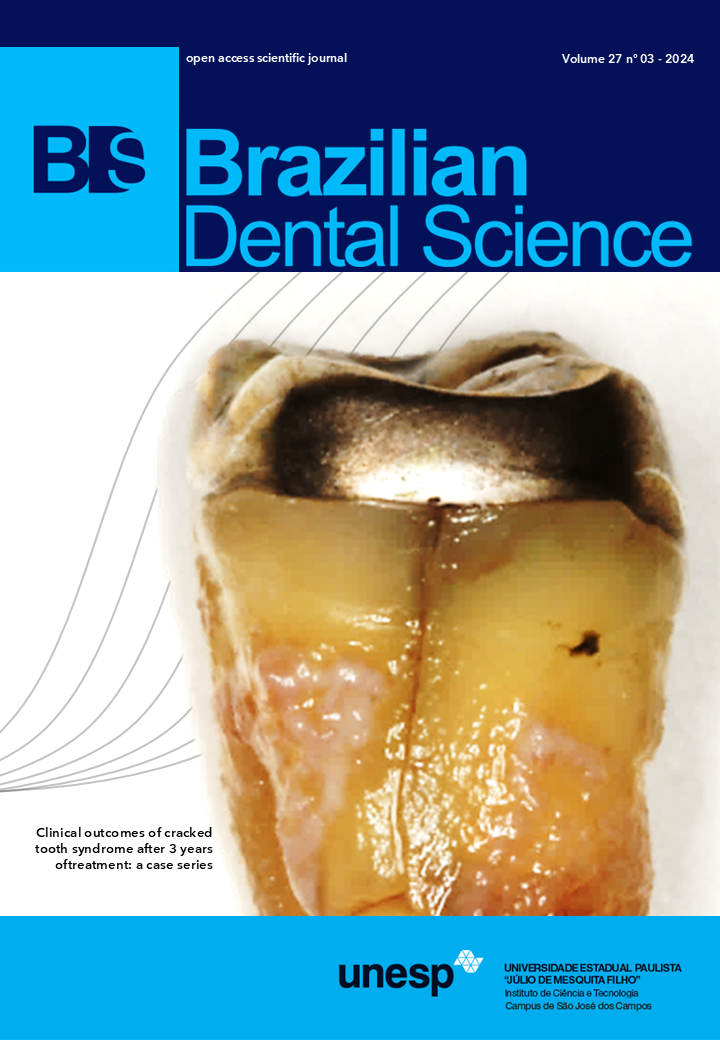Effect of charcoal-containing toothpastes on roughness and color stability of bulk-fill resin composites
DOI:
https://doi.org/10.4322/bds.2024.e4414Abstract
Objective: To evaluate the effects of different commercially available charcoal-based toothpastes (CBTs) on the roughness and color of bulk-fill resin composites (RCs). Materials and Methods: Disc-shaped samples (6 × 2 mm) were made with nanofilled (NF) bulk-fill (Filtek One, 3M Oral Care) or nanohybrid (NH) bulk-fill (Aura, SDI) RCs. The analyses were performed initially (baseline) and after 10,000 brushing cycles in a toothbrushing machine using (n=10): regular toothpaste (Colgate Total 12, Colgate-Palmolive) or three types of CBTs (Colgate Luminous White Activated Charcoal - Colgate-Palmolive; Black is White - Curaprox; 3D White Mineral Clean - Oral-B). The specimens were analyzed for roughness (RA, µm) and quantified by coordinates of the CIEL*a*b* color space, Vita Classical scale (shade guide unit, SGU), and general color alteration (deltaEab; deltaE00). The data were evaluated using generalized linear models (Ra, L*, b*, deltaEab; deltaE00), Mann-Whitney, Kruskal-Wallis, and Dunn tests (a*; deltaSGU), with alpha=0.05. Results: Regardless of the toothpaste, Ra increased after brushing, but was significantly higher in NH than NF (p=0.0001). L* significantly decreased after brushing with Black is White toothpaste (p=0.0027). NF showed higher deltaE00 values after brushing with the CBTs, compared with regular toothpaste. Moreover, NH exposed to Black is White exhibited higher deltaEab and deltaE00 values than the other toothpastes (p<0.0001). Conclusion: The roughness alteration was not mediated by the type of toothpaste. However, the CBTs were able to change the optical properties of bulk-fill RCs, with more pronounced effects, as observed with Black is White.
KEYWORDS
Activated charcoal; Color; Composite resins; Toothbrushing; Toothpastes.
Downloads
Published
How to Cite
Issue
Section
License
Brazilian Dental Science uses the Creative Commons (CC-BY 4.0) license, thus preserving the integrity of articles in an open access environment. The journal allows the author to retain publishing rights without restrictions.
=================




























